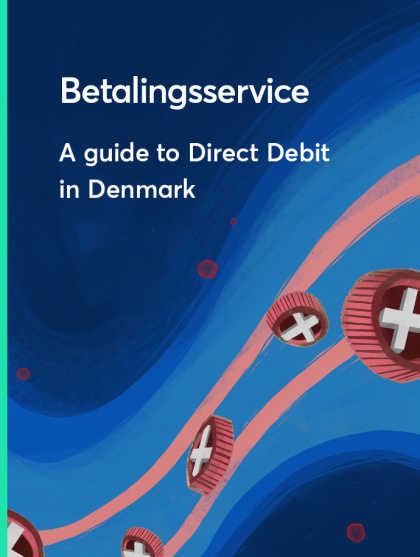
Betalingsservice mandates
Last editedMay 20223 min read
This section of our guide explains the elements required to start taking Direct Debit payments from your customers; from mandates (known as betalingsaftale in Danish) to submitting payments, and customer claims.
What is a Betalingsservice Mandate?
Prior to collecting any Direct Debit payments, your customer must give authorisation. This authorisation comes in the form of a mandate (you may be familiar with this term if you collect via Bacs and SEPA schemes.). Details of each authorisation are standardised and must include the following information:
The CPR number of the payer (Civil Personal Registration or CPR nummer/Det Centrale Personregister as known in Denmark) or the CVR number if the payer is a business.
The payer’s bank registration and bank account number
The payee’s PBS number
The payee’s Debtor Group number
A unique mandate reference (which will be used to set up future payments)
If the CPR or CVR number does not match the payer’s bank registration number and bank account number then the mandate will not be authorised.
In order for a customer to set up a mandate, they must have entered into a debtor agreement with their bank, this is common in many Scandinavian countries and indeed others around the world like Australia. This acts as approval for the customer to make payments by Direct Debit via their bank. If the debtor agreement is not in place, the mandate will fail to set up.
How to set up a mandate
There are several ways to set up a mandate:
The merchant can submit the mandate details to Nets after the customer has provided their details via a form embedded in the merchant’s website.
The customer can sign up via their Betalingsservice app.
The customer can sign up via their online banking.
The customer can sign up at their local bank branch.
The customer can choose to make all future payments via Betalingsservice after making an initial payment using the electronic payment slip sent by the merchant.
Nets no longer accept paper-form mandates.
If the merchant submits details of the mandate setup to Nets (option 1 above) then they can add the PBS number, Debtor Group number and mandate reference after obtaining the customer's details. This means that the merchant only needs to know three pieces of information from the customer; their CPR/CVR and their bank registration and account numbers.
Phone mandates
In the event of a customer wishing to complete a mandate over the telephone, the merchant has several options:
They can input the customer’s details directly into an online form on behalf of the customer.
They will soon be able to forward customers onto Nets’ telemarketing solution where the customer can enter their details through their telephone.
They will soon be able to integrate and submit customer details directly to Nets’ API solution.
Managing your mandates
Every mandate must include the customer’s CPR/CVR number, bank registration number and bank account number. You must then ensure that each field has been completed and is verified.
You must ensure that you retain evidence to show you are authorised to debit the customer’s bank account. There is no strict format for this evidence but you should, at a minimum, keep note of the date and method of mandate setup.
You must keep this evidence of mandate creation for at least four years after the end of the customer relationship. If using GoCardless, the relevant details would be automatically stored on your behalf. If, when requested, you cannot prove that the mandate existed then any payments are liable to be refunded.
As a merchant, you can cancel any mandate by relaying the necessary information in your mandate setup submission file to Nets. If the customer wishes to cancel a mandate then they must do this through their bank. The bank in question will then inform the merchant, who must inform Nets of the cancellation.
Mandate data
Under the scheme rules for Betalingsservice, a merchant must delete the CPR/CVR number and customer bank data received after the mandate has been set up. Nets will also delete this information three months after setup.
As an exception to this rule, a merchant (or administrator) may retain this data if there is a risk of a reversal or complaint in future. However, it must not be transferred or used for any purposes other than resolving issues related to future reversals or complaints. In other words, you cannot use this data to set up a new mandate; the full set-up process would need to be completed from the beginning each time.
Due to the customer protection in place for Direct Debit payments (which allows for claims many months after a payment has been made), GoCardless stores this data in compliance with Nets’ requirements stated above.
Mandates through GoCardless
Customers can easily set up new mandates with GoCardless. This includes the following benefits:
An optimised customer setup flow, with simple online payment pages which can be customised for branding consistency.
GoCardless manages mandate set-up and storage, payment submission, and scheme requirements on your behalf.
GoCardless automatically relays responses from Nets regarding the mandate management.

